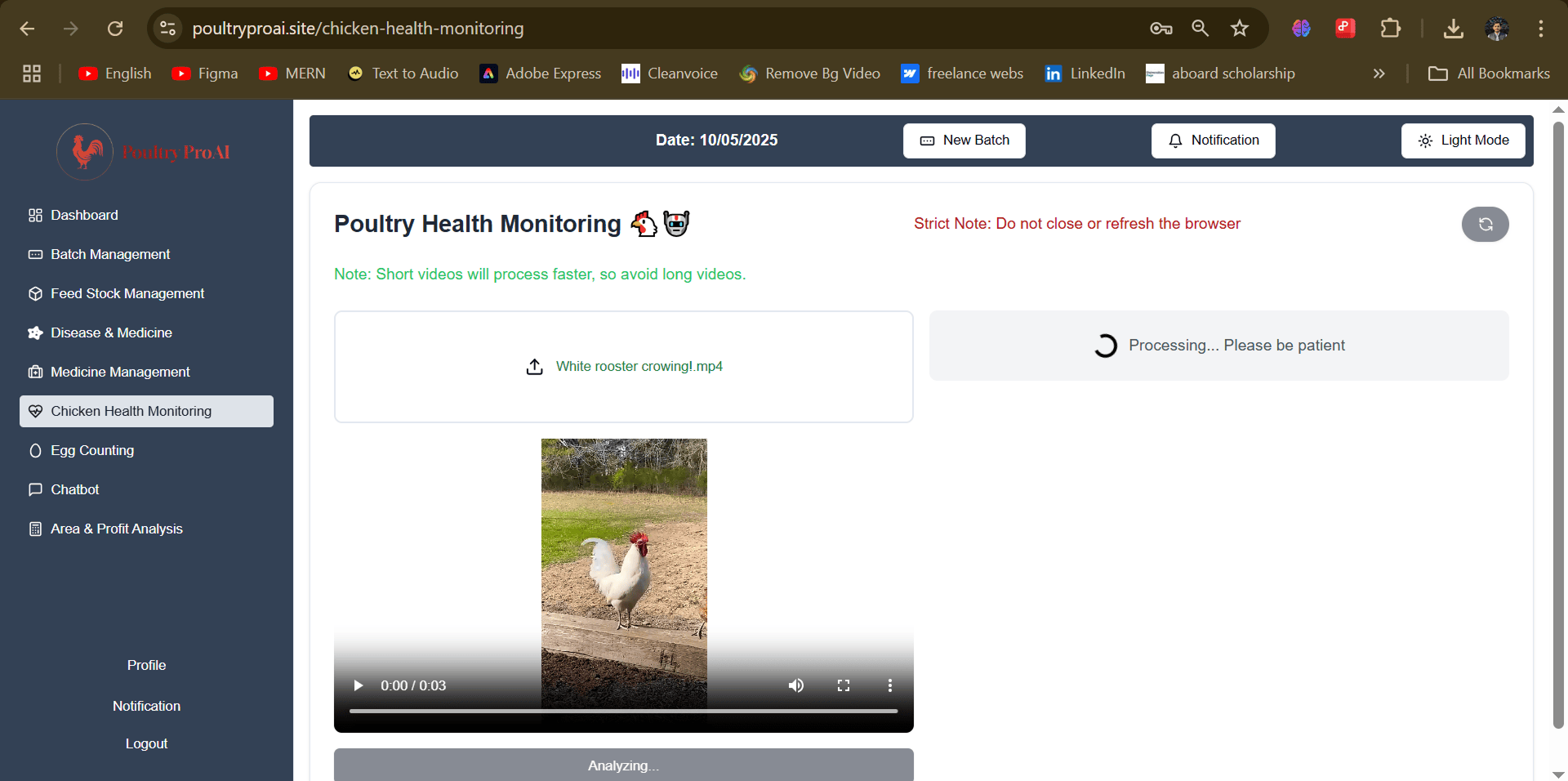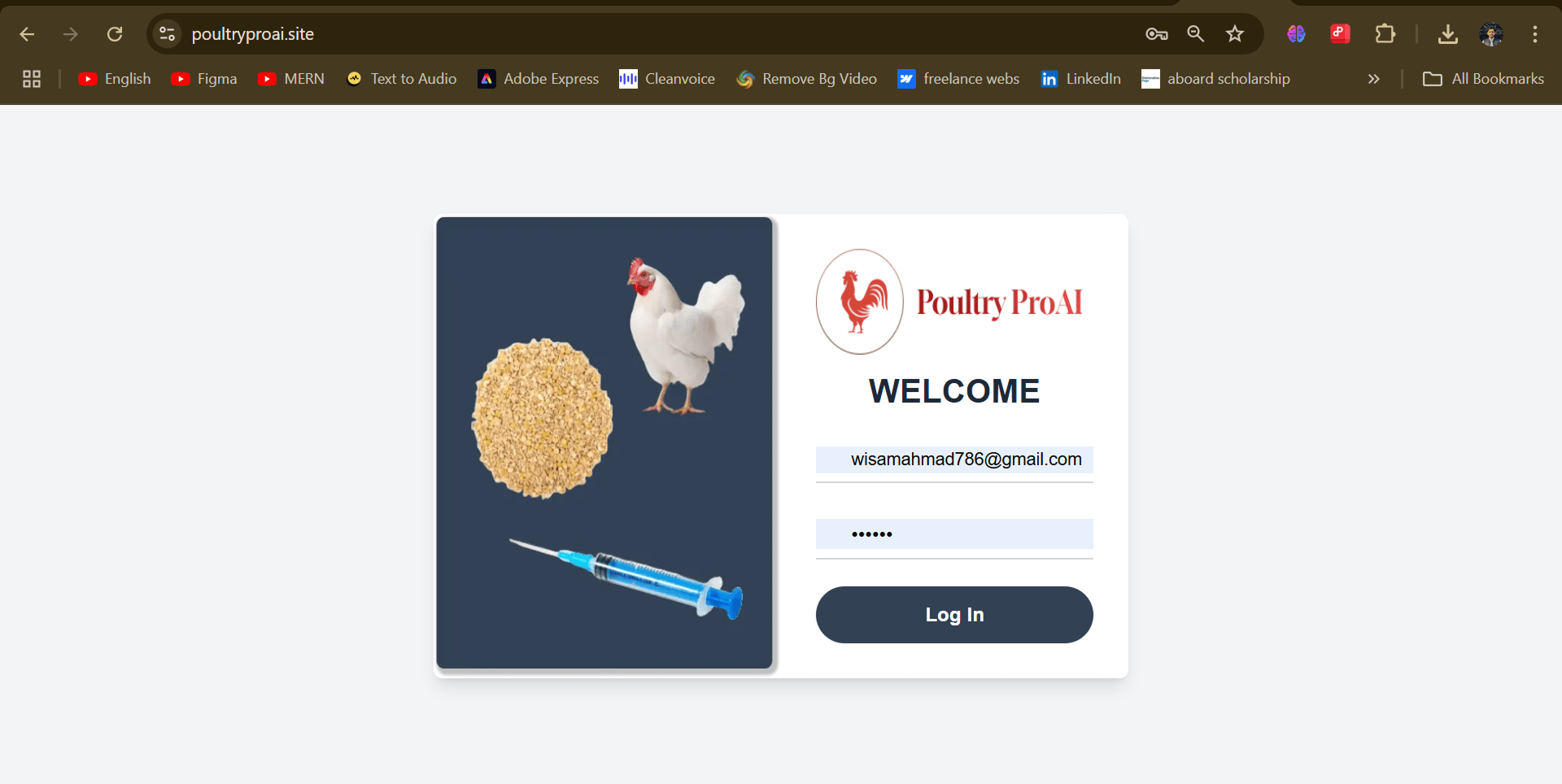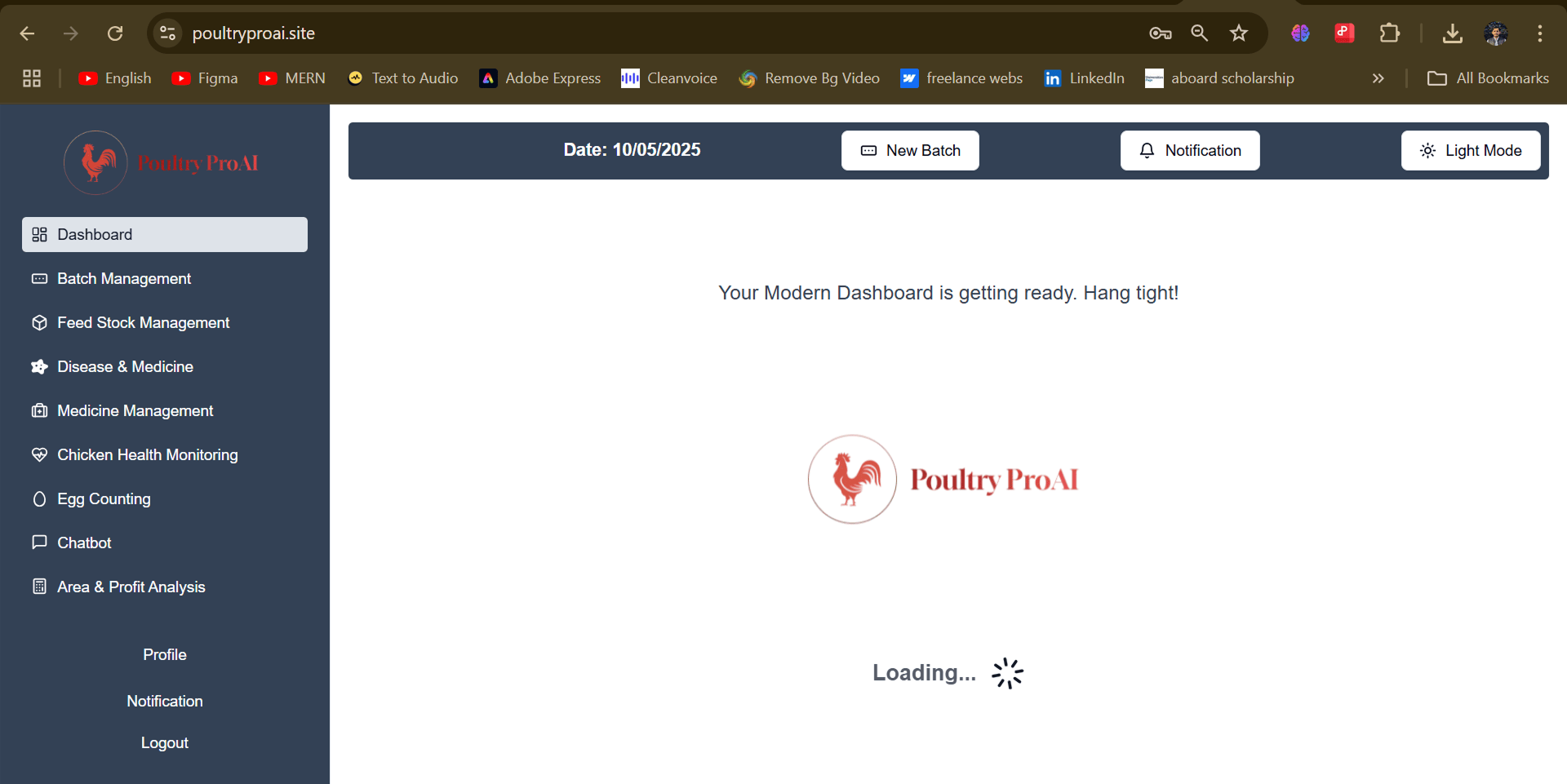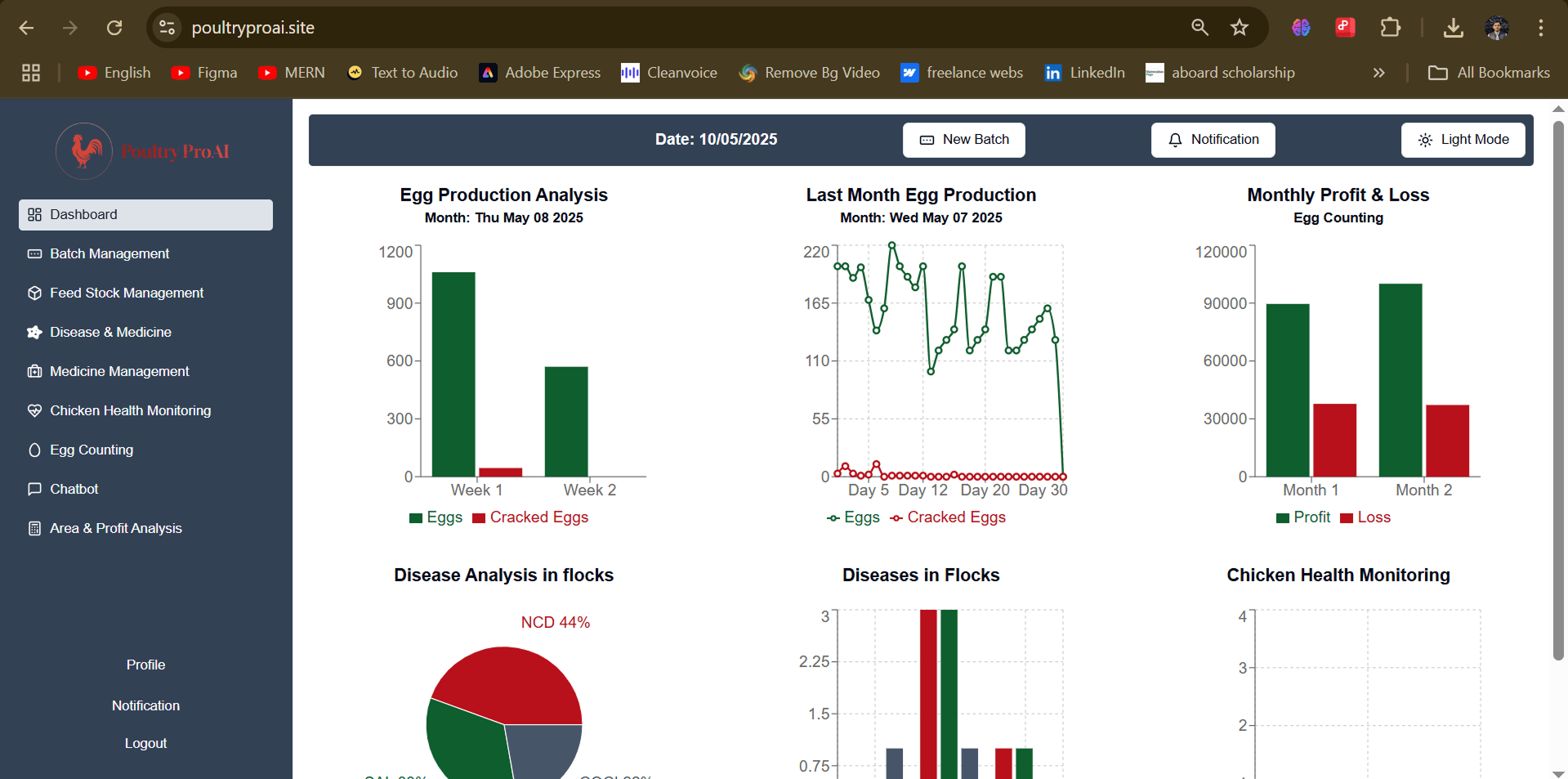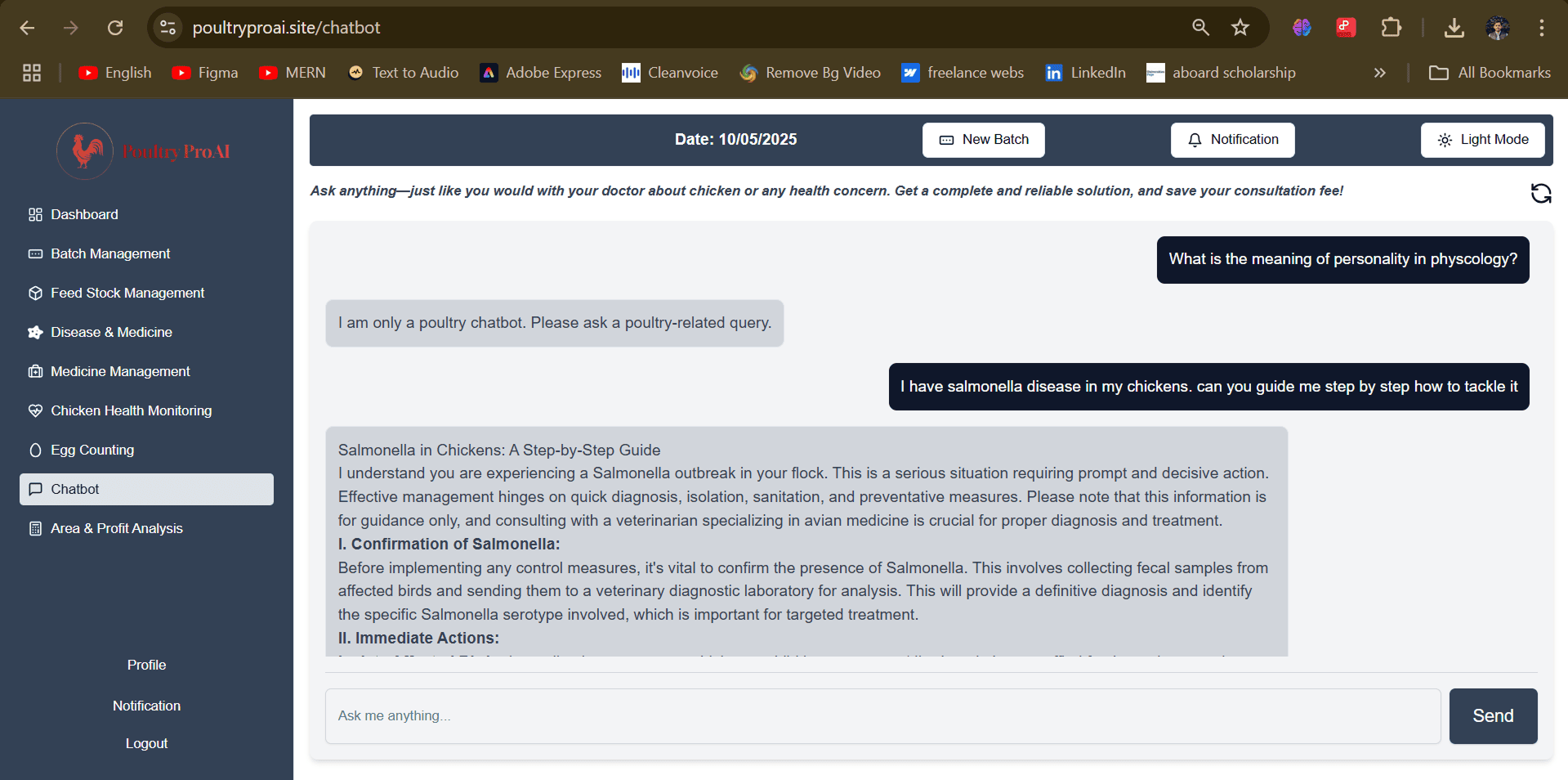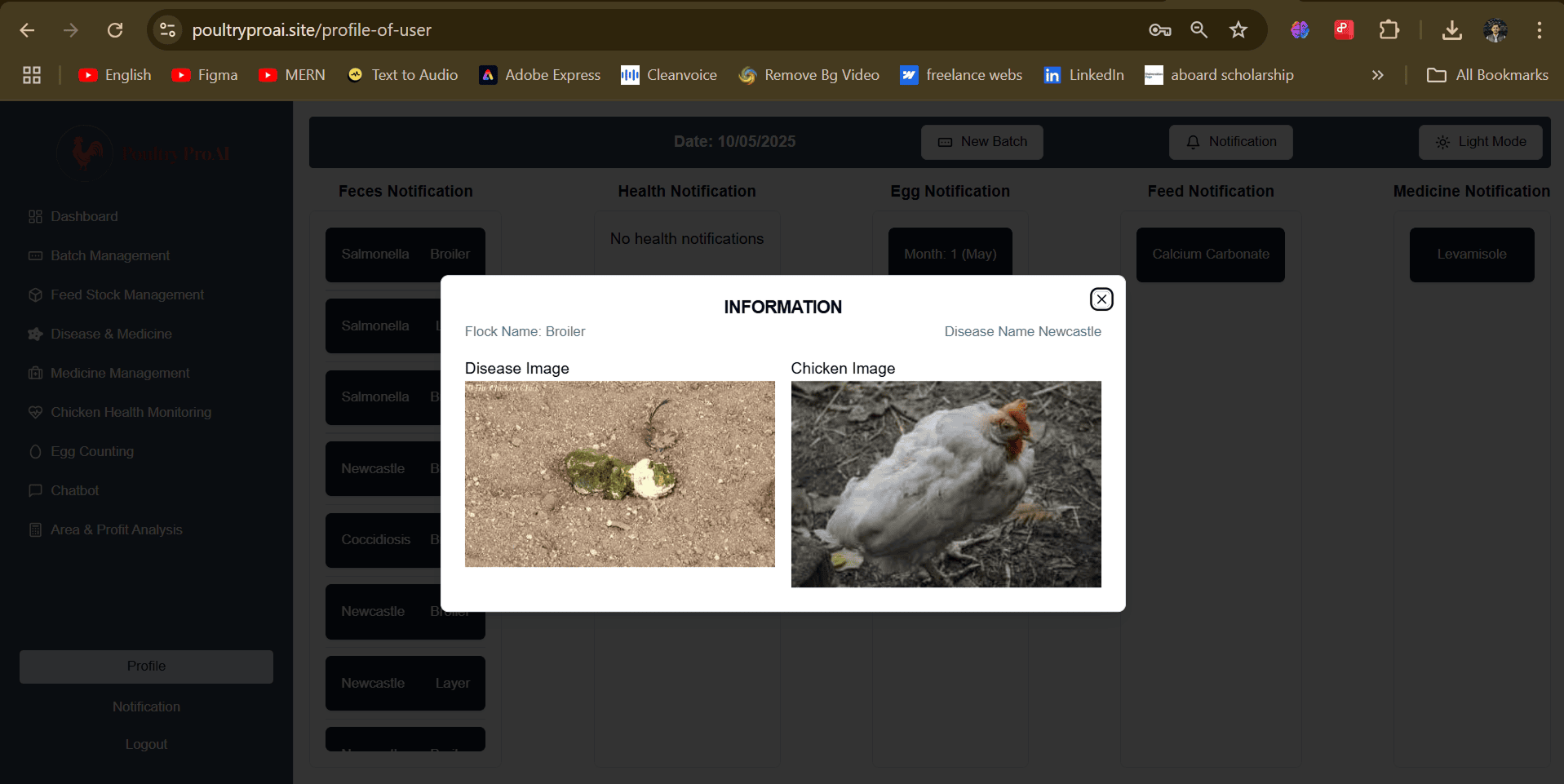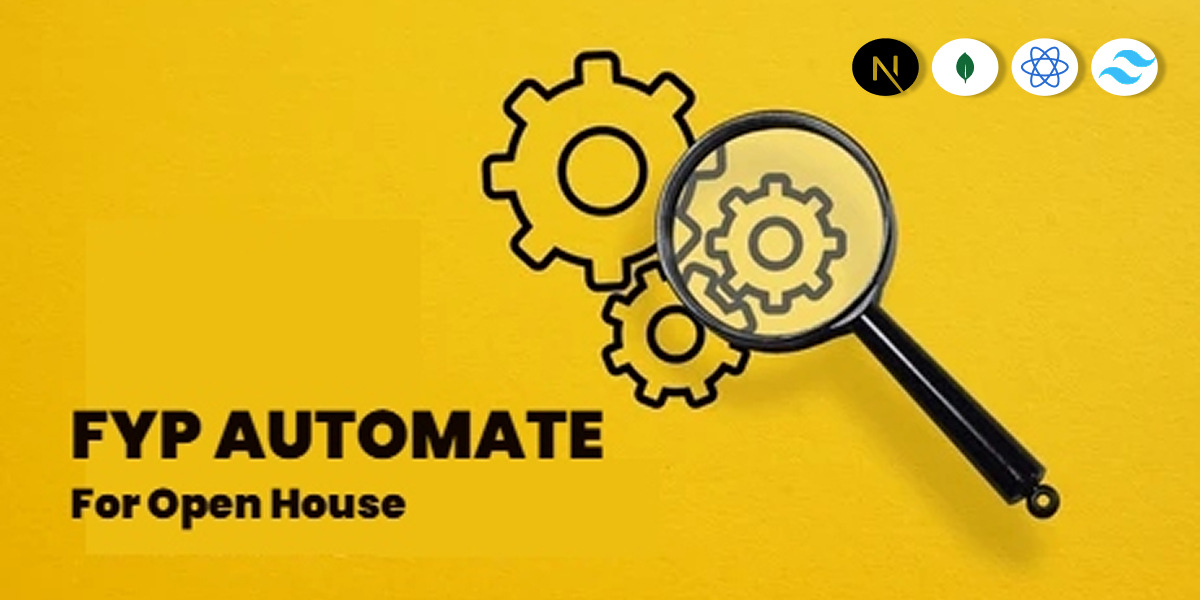Objectives
* Early Detection of Chick Health Issues: Implement AI-powered computer vision to
monitor the health of chicks in real time, enabling early detection of diseases and
reducing the risk of illness spread.
* Feed Formulation and Optimization: provide optimized feed and vaccination
schedules tailored to the nutritional needs of different poultry breeds and growth stages,
maximizing health and productivity.
* Accurate Egg Counting: Leverage object detection technology to automate egg
counting.
* Disease Diagnosis and Medication Guidance: Analyze fecal samples to diagnose
common poultry diseases and recommend suitable treatments in tabular form.
* Scalable Farm Management: Offer a cost-effective, scalable solution that supports
small to medium-sized poultry farms by reducing reliance on manual labor and providing
comprehensive management tools.
* Area and Profit Calculation: Assess available farm space to calculate the optimal
number of chicks, guiding farm managers on flock size and profitability through datadriven insights.
* User-Friendly Dashboard and Data Accessibility: Provide a secure, intuitive
dashboard displaying key metrics, including total chick count, total investment in
chickens and eggs and eggs’ profit of month to assist in informed decision-making.
* Real-Time Chatbot Assistance: Integrate Gemini for real-time, AI-driven guidance,
offering users instant support on various poultry management tasks, from disease
management to best practices
Socio-Economic Benefit
Increased Farm Productivity & Profitability
Automates health monitoring, egg counting, disease diagnosis, and feed optimization, reducing labor and minimizing losses. For example, early AI disease detection reduces chick mortality, boosting farm revenues.
Cost Reduction & Resource Efficiency
AI-driven feed and vaccination plans optimize resource use, preventing overfeeding or underfeeding. This reduces unnecessary costs and environmental waste.
Job Creation & Skill Development
While automating manual tasks, PoultryPro AI creates new skilled roles in system management, AI maintenance, and data analysis, offering rural workers opportunities to upskill.
Enhanced Food Security
More consistent egg and meat production ensures a stable protein supply, helping meet the growing population’s food needs and stabilizing market prices.
Economic Empowerment of Small Farmers
Affordable, scalable technology lets small farmers expand operations efficiently. For example, a farmer managing 500 birds can grow to 1,500 without tripling labor or risk.
Rural Economic Development
As farms grow more profitable, rural economies benefit through increased spending on goods, services, and local infrastructure, and the rise of supporting industries like veterinary services and feed suppliers.
Improved Animal Welfare
Automated monitoring ensures faster treatment of sick or injured birds, reducing suffering and helping farms meet international welfare standards, opening export opportunities.
Environmental Sustainability
Optimized feed and targeted vaccinations reduce waste, emissions, and chemical use, making poultry operations more eco-friendly and aligned with sustainable agriculture goals.
Market Competitiveness & Innovation
Real-time insights allow farmers to adjust production strategies (e.g., increasing egg production when prices rise), helping them stay competitive in local and national markets.
Reduction of Disease Outbreak Risks
Early-warning systems help detect and contain diseases like avian flu, protecting farms, communities, and national food supplies from devastating losses.
Data-Driven Financial Planning
Farmers gain access to detailed data on profits, costs, and growth trends, enabling smarter investment, expansion, and market strategies, while reducing debt risks.
Export Potential & Economic Growth
Improved product quality and consistency allow farms to meet international standards, opening export channels and boosting Pakistan’s agricultural trade.
Resilience to Climate & Market Shocks
AI tools help farmers adapt to challenges like sudden feed cost increases or heatwaves by suggesting alternative strategies, enhancing resilience and stability.
Social Inclusion & Gender Empowerment
User-friendly, affordable technology gives women farmers access to advanced tools, enhancing their productivity, decision-making power, and economic independence.
Methodologies
For PoultryPro AI, we followed the Agile methodology over one continuous year. Agile allowed us to break the large, complex system into smaller, manageable development sprints, get rapid feedback from our poultry client Mudasir, and continuously adjust features and priorities.
Here’s how we built it step by step:
Initial Planning & Backlog Setup
(Months 1–2): We first defined core modules (chick health monitoring, egg counting, disease diagnosis, feed optimization, chatbot) and created a prioritized product backlog. We identified user stories like “As a farm manager, I want to detect sick chicks early” and “As a farmer, I want to get a vaccine schedule per batch.”
Sprint 1 (Months 3–4): Core Feature Prototypes
We built minimum viable versions (MVPs) of the chick health monitoring (using computer vision), egg counting, and disease diagnosis modules. We deployed early demos for Mudasir to test on real farm data.
Example change: Initially, we planned to use only ChatGPT for chatbot integration, but after feedback that Gemini provided better localized poultry advice, we switched APIs mid-cycle — an Agile pivot based on real client needs.
Sprint 2 (Months 5-6): Expanding Functionalities
We added the feed optimization and vaccine scheduling modules, along with historical health logs and daily reports. Mudasir asked for a low-feed notification system, which was added during sprint 5, showing Agile’s responsiveness to evolving requirements.
Sprint 3 (Months 7–8): User Interface & Dashboard Enhancements
After client walkthroughs, we improved the dashboard visuals (charts, profit graphs, batch tracking) and made the interface simpler based on Mudasir’s feedback that farm workers had varying levels of tech familiarity. We also strengthened system security (RBAC, encrypted data).
Sprint 4 (Months 9–10): Performance Optimization & Final Integration
We optimized backend performance (faster image processing, efficient MongoDB queries) and integrated all modules smoothly. We ran farm-wide pilots on Mudasir’s site, gathering final adjustments (e.g., clearer egg count correction tools, better zero-count detection receipts).
Throughout, each sprint followed this cycle:
Plan: Define sprint goals and tasks.
Build: Develop features.
Demo: Present to Mudasir for feedback.
Adjust: Update backlog based on feedback.
Test: Validate module performance and usability.
Outcome
The PoultryPro AI project delivered a successful, functional, and client-tailored poultry farm management system after one year of iterative Agile development. Here’s a precise summary of the main outcomes:
Fully Integrated System Delivered
We completed and deployed all planned modules: chick health monitoring (with computer vision), automated egg counting, disease diagnosis with medicine recommendations, feed optimization, vaccine scheduling, and the chatbot (using Gemini API instead of ChatGPT after client feedback).
Client-Specific Adjustments Implemented
Throughout development, we actively incorporated feedback from our poultry client, Mudasir, including UI simplifications for non-technical workers, adding a low-feed notification feature, and enhancing egg count correction tools.
Improved Farm Productivity and Accuracy
After pilot testing, the system improved egg count accuracy, reduced manual data entry errors, and provided earlier alerts on sick chicks, enabling better farm decision-making and reducing losses.
User-Friendly Dashboard & Reports
We delivered an intuitive dashboard showing key metrics (total chicks, investment, monthly profit), along with daily health logs, historical reports, and downloadable summaries — giving the farm owner clear, actionable insights.
Performance-Optimized, Scalable Design
The final system was optimized for performance, handling thousands of chicks and eggs in real time, and was designed to scale for future expansions or integration with additional farm sensors.
Successful Client Satisfaction
The client confirmed that the system met their operational needs, improved farm efficiency, and fit their budget. By the end of the project, the system was ready for full-scale deployment across the farm.

